This post may contain affiliate links. Please read our disclosure policy.
How to make bechamel sauce at home (aka white sauce) with just 3 base ingredients: flour, butter, and milk. Plus, the answers to tons of FAQs and several ways to adapt the bechamel recipe! This makes for the perfect lasagna bechamel and other pasta, pie, and casserole dishes!
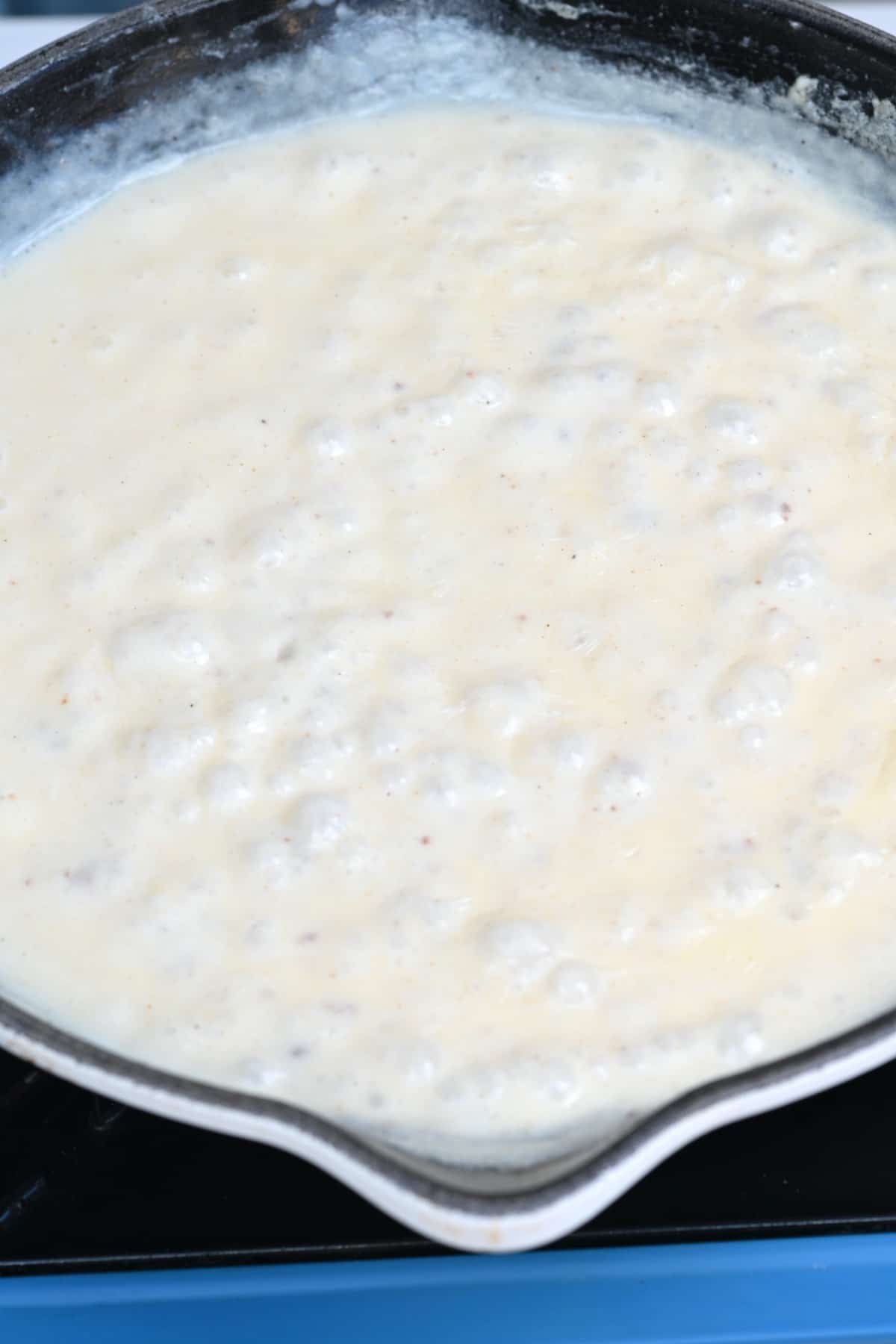
Last week I decided to share a mixed vegetable lasagna recipe on my Instagram stories, using 100% homemade ingredients. That included homemade pasta, tomato paste, and this homemade bechamel sauce.
When it comes to bechamel sauce, I’ll let you in on a secret – I’ve never tried a single supermarket version that has tasted anywhere near as good as homemade. Not only that but sometimes it has tasted so bad that I’ve practically had to force myself to eat it. Worse yet, pantry versions are filled with stabilizers and gums and can have ingredient lists that are 20+ in length, and they work out far more expensive than making it homemade.
In comparison, homemade white sauce uses just three ingredients as its base: butter, flour, and milk! Once prepared, it’s buttery, silky, and creamy (no surprises there!)
Want to save this recipe?
What is bechamel?
Bechamel (also referred to as white sauce) is a French “mother sauce” (meaning it’s one of the building blocks of classic French cuisine) made from a simple roux (butter and flour mixture) and milk combination; often with salt and nutmeg added in.
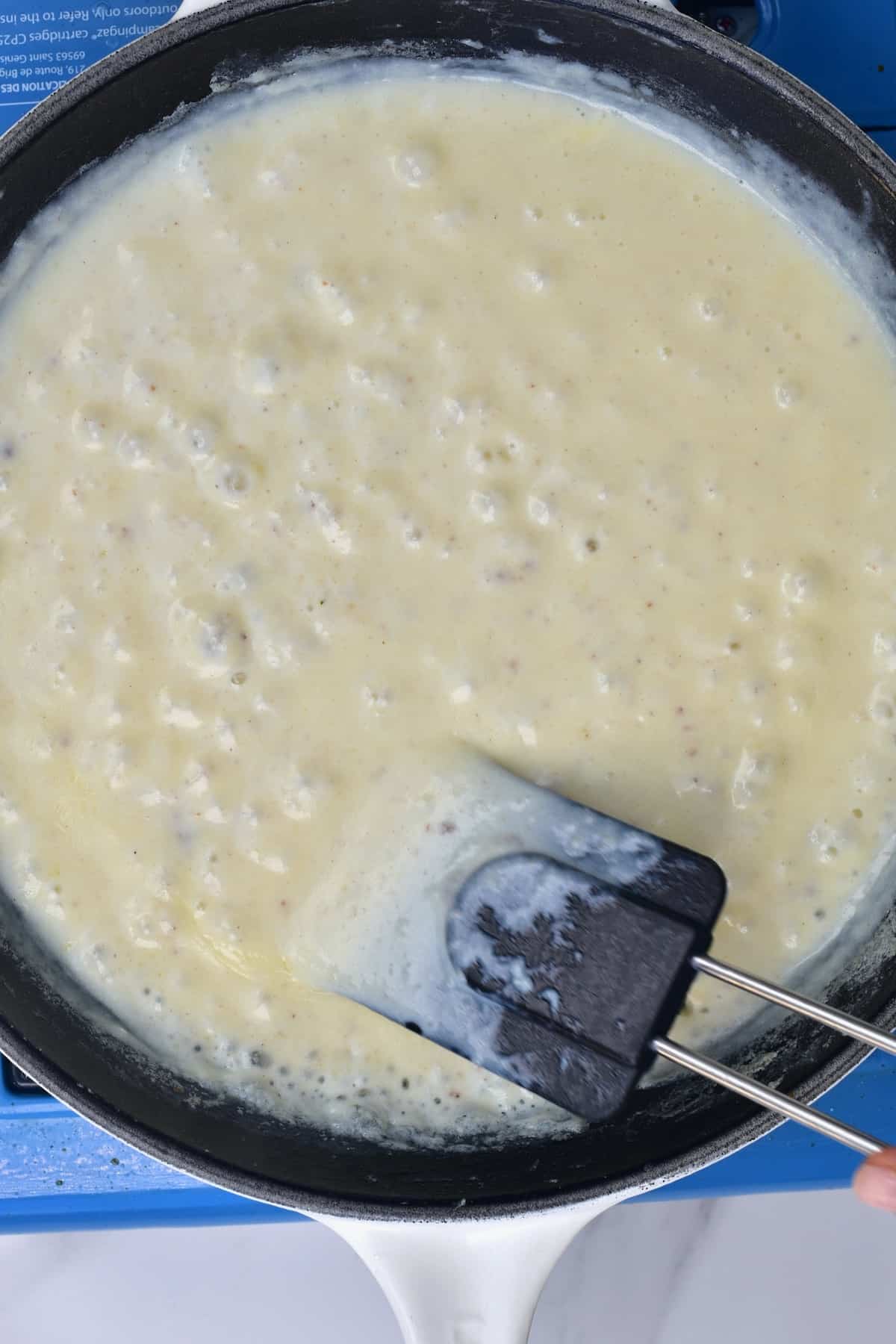
Fun fact: The full list of “Mother Sauces” is béchamel, velouté, espagnole, hollandaise, and tomato!
Béchamel has several uses, including as a lasagna sauce, for Moussaka, within a fish pie, for pasta bakes, and it is used to create other sauces too. For example, by adding cheese, you have a simple cauliflower cheese sauce/mac ‘n’ cheese sauce (also called ‘mornay sauce’).
It can also become a type of white gravy sauce or even work within casseroles!
The Bechamel Sauce Ingredients
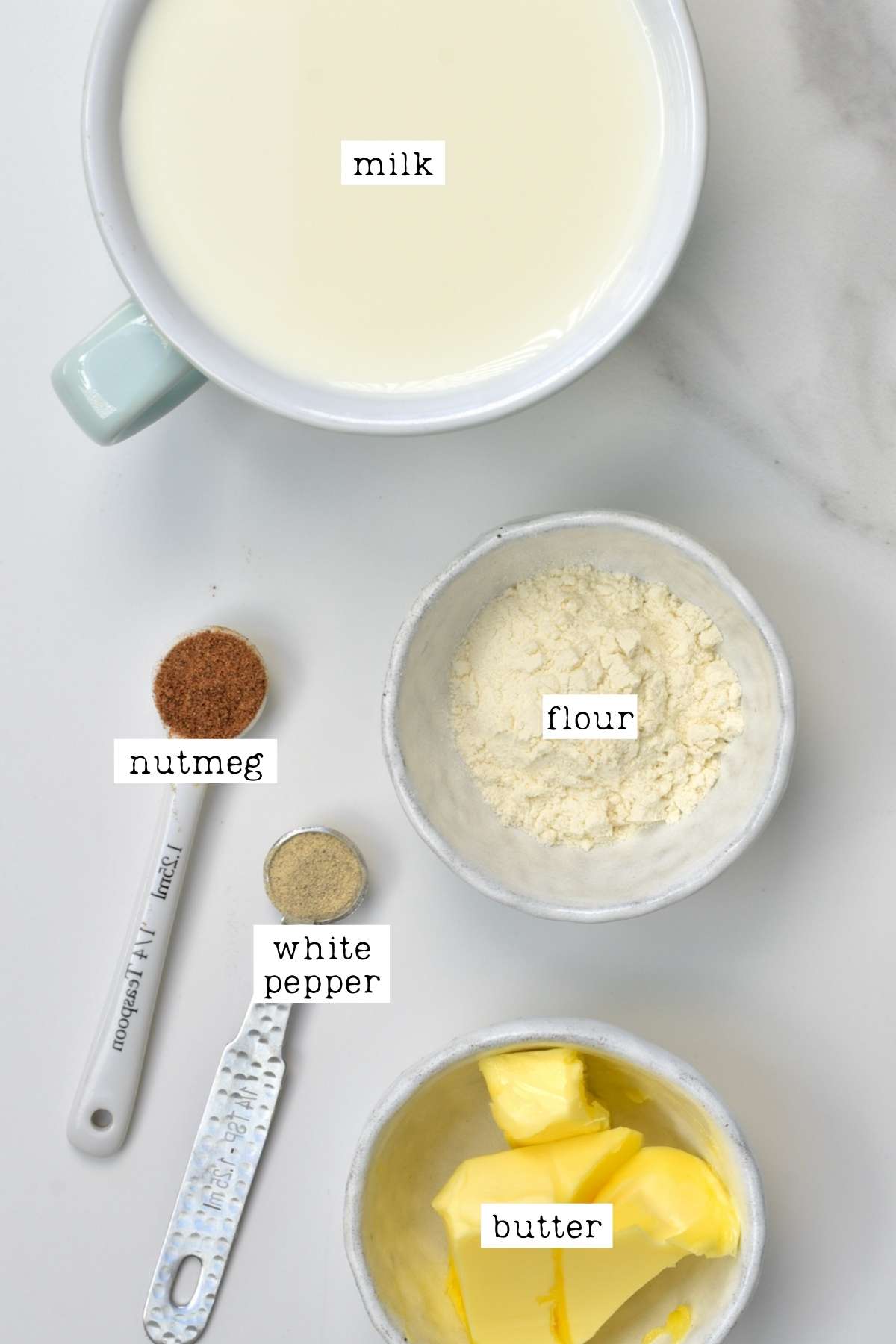
- Flour: general all-purpose flour will work wonderfully in a homemade bechamel sauce.
- Butter: unsalted butter is the traditional ingredient within bechamel. Though, feel free to use salted if it’s all you have – you can then adjust the amount of salt in the rest of your recipe. You could alternatively use homemade ghee (clarified butter).
- Milk: use whole milk for the creamiest results. Though skim milk will work fine too.
- Nutmeg: you won’t necessarily taste this in the white sauce – yet you’d know it’s missing if it weren’t there. Somehow it has a magical ability to add depth to the bechamel.
- White pepper powder: this is optional, but I like the extra flavor it provides.
How to Make Bechamel Sauce (white sauce)
Step 1: Prepare the roux
In a large pan or saucepan, melt the butter over low heat. Once it’s fully melted, add the flour, and cook it for around 1 minute. The mixture should be pale and foaming – that’s when it’s ready for the next step.
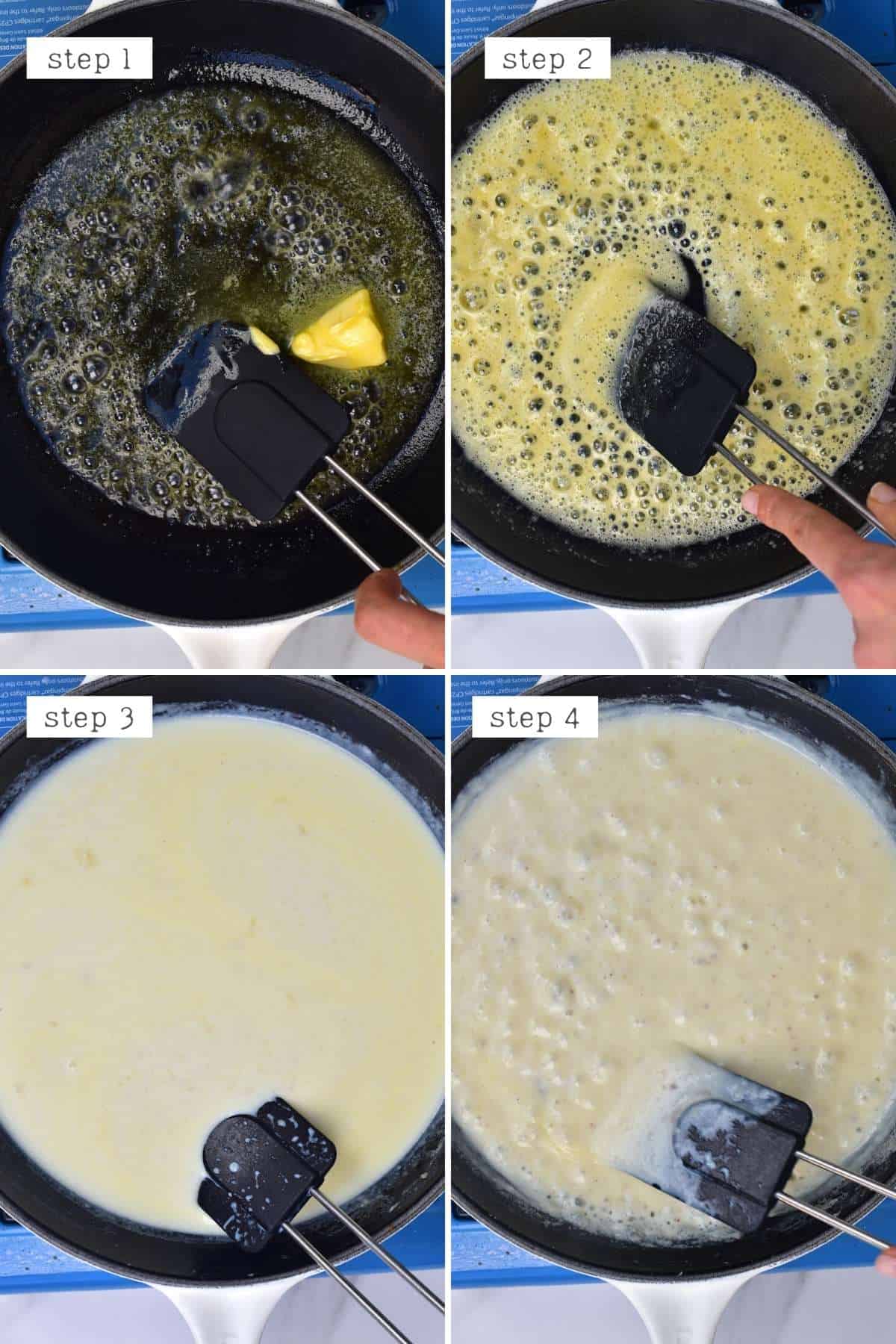
Step 2: Add the milk
Turn off the heat from the pan and then gradually add in the milk. Just add in a little at a time, constantly stirring to incorporate.
If you add it all in at once, the sauce will become lumpy – so avoid this at all costs!
Once all the milk is added, place it back over low heat and bring it to a boil, stirring constantly. The sauce will thicken as it heats.
Once thickened to your desired level (it should coat the back of a spoon), add the spices, reduce the heat to a gentle simmer for two minutes, then it’s ready to use as a lasagna bechamel or for whatever purpose you’d prefer!
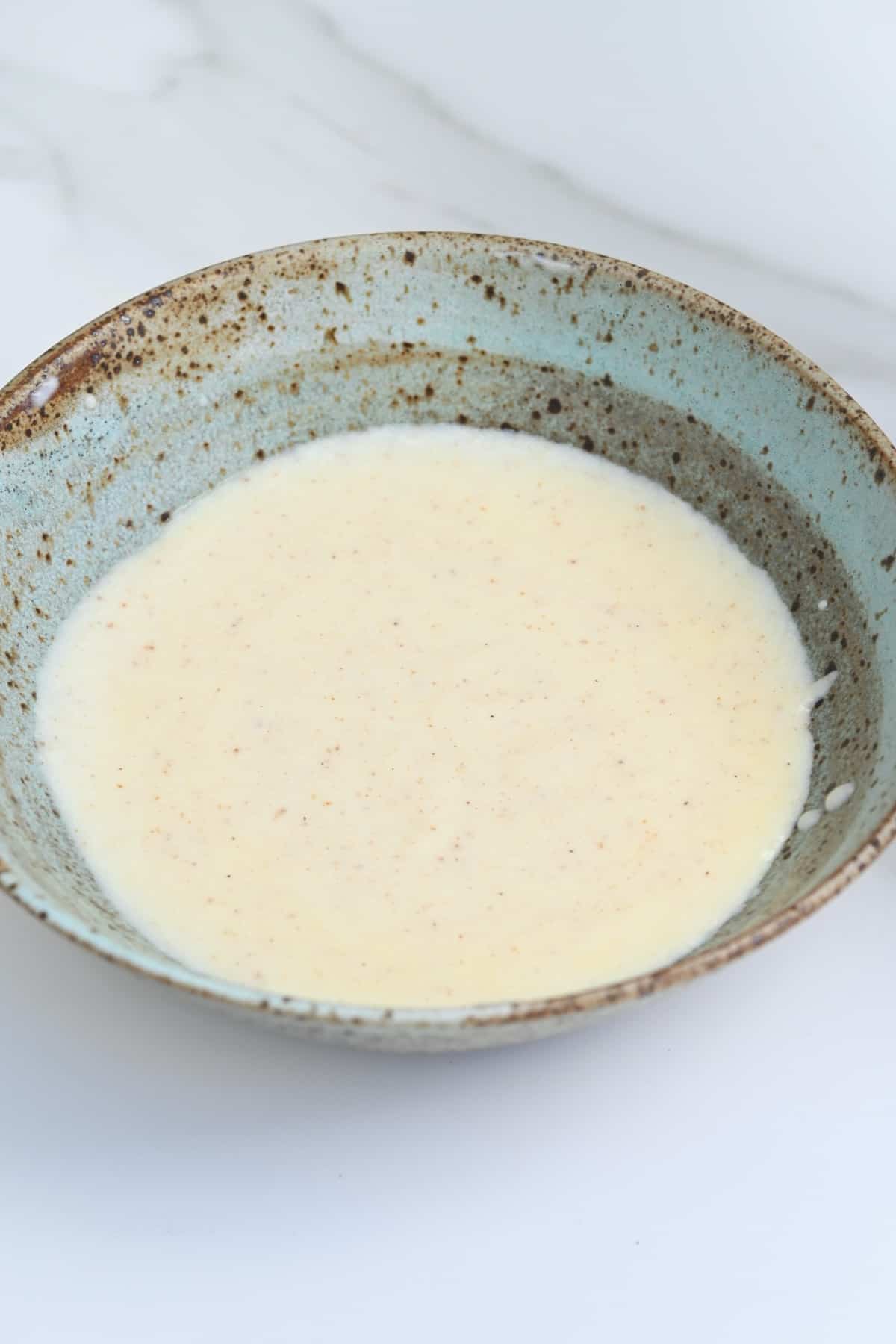
FAQs
You can make bechamel 2-3 days in advance. Once prepared, make sure to place plastic wrap against the top of the sauce to stop it from developing a film and refrigerate until it’s ready to reheat and use.
All you need to do is add the sauce back to a pan and whisk well with a splash of extra milk to bring it back to the correct consistency.
If you find that the sauce is still a little lumpy, you can always sieve it before use – or use an immersion blender on it.
I’ll be honest, this isn’t something I do often – I usually make just enough per recipe.
However, there shouldn’t be an issue with freezing the sauce. Allow it to cool completely, then transfer to a freezer-safe airtight container (with a bit of headspace for expansion) and freeze for between 2-3 months.
Allow it to thaw in the refrigerator overnight and then reheat following the guidance just above.
The sauce may look a little split when it’s thawed. However, reheating it and whisking well should return it to the correct consistency.
Honestly, there are probably 1001 different ways to adapt a bechamel sauce. However, if you’re looking for simple ways to add flavor without completely changing the sauce, there are a few options.
Add mustard: mustard powder or Dijon mustard are common additions to the bechamel sauce.
Add spice: a pinch of chili or cayenne powder is all you need for extra depth of flavor.
Onion clouté/pique: pierce a section of onion with cloves (onion cloute) or use the cloves to attach a bay leaf to the onion (onion pique). You can add this to the milk while heating it or into the bechamel – then remove it before using.
Onion: alternatively, forget about the above and finely chop and onion. Sauté it lightly until it begins to soften and go translucent – before adding the flour and butter. Alternatively, you could add in a bit of onion powder.
Garlic: like the above, you can sauté a little garlic or add a little garlic powder to the sauce.
I’ve picked up three main tips when it comes to fixing a lumpy bechamel sauce.
Add egg: I know this might sound add. However, if you find that the sauce is a bit lumpy, then allow it to cool slightly before mixing in a beaten egg yolk (this is optional!). Alternatively, you can use an immersion blender to break up any lumps. This is a tip I picked up from a friend who often makes Greek-style Besamel (where eggs are a common ingredient).
Add ice water: As you add in the milk, if you find it becoming too lumpy, add in a splash of ice water instead of milk and whisk – FRANTICALLY. The lumps will magically disappear.
Use an immersion blender: The easiest of all three options. Simply stick an immersion blender into your sauce and whizz away the lumps. No one will ever know – shhh, I’ll keep your secret!
Recipe Notes
- The milk temperature: I remove my roux from the heat before adding the milk, which means I can usually get away with adding cold milk without is spitting and/or going ‘crazy.’ However, to eliminate all risk feel free to heat up the milk in a saucepan or in the microwave before adding it to the roux.
- For a quick cheese sauce: add in around ½ cup of sharp cheese in the last two minutes before removing the white sauce from the heat.
- Make sure to cook the flour enough: you don’t want it to be brown, but you also don’t want your homemade bechamel to have a raw floury flavor. So, make sure to allow the roux to cook for a while until it’s fragrant.
- Use a whisk and spoon/silicone spatula: if I can (i.e., those days when I remember where my whisk is…), I like to use both tools when making the homemade bechamel sauce. A whisk is excellent for breaking up lumps for a smooth sauce, but a spatula or spoon can be used to properly stir the bottom of the pan and ensure nothing is burning or sticking to the pan.
Other Simple Sauce Recipes
If you try this lasagna bechamel sauce recipe, I’d love to hear your thoughts/questions below. Also, I’d appreciate a recipe card rating below, and feel free to tag me in your recipe recreations on Instagram @Alphafoodie!
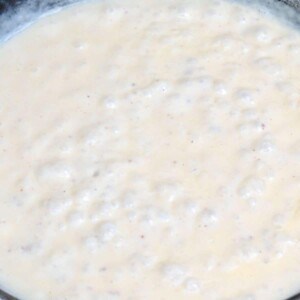
How to Make Bechamel (White Sauce)
Ingredients
- 1.4 oz butter unsalted
- 1.5 Tbsp plain flour
- 1.5 cups milk whole milk is best
- 1/4 tsp ground nutmeg powder
- 1/4 tsp white pepper powder optional
Instructions
Step 1: Prepare the roux
- In a large pan or saucepan, melt the butter over low heat. Once it’s fully melted, add the flour, and cook it for around 1 minute. The mixture should be pale and foaming – that’s when it’s ready for the next step.
Step 2: Add the milk
- Turn off the heat from the pan and then gradually add in the milk. Just add in a little at a time, constantly stirring to incorporate.If you add it all in at once, the sauce will become lumpy – so avoid this at all costs!
- Once all the milk is added, place it back over low heat and bring it to a boil, stirring constantly. The sauce will thicken as it heats.
- Once thickened to your desired level (it should coat the back of a spoon), add the spices, reduce the heat to a gentle simmer for two minutes, then it’s ready to use as a lasagna bechamel or for whatever purpose you’d prefer!
Notes
- The milk temperature: I remove my roux from the heat before adding the milk, which means I can usually get away with adding cold milk without is spitting and/or going ‘crazy.’ However, to eliminate all risk feel free to heat up the milk in a saucepan or in the microwave before adding it to the roux.
- For a quick cheese sauce: Add in around ½ cup of sharp cheese in the last two minutes before removing the white sauce from the heat.
- Make sure to cook the flour enough: You don’t want it to be brown, but you also don’t want your homemade bechamel to have a raw floury flavor. So, make sure to allow the roux to cook for a while until it’s fragrant.
- Use a whisk and spoon/silicone spatula: If I can (i.e., those days when I remember where my whisk is…), I like to use both tools when making the homemade bechamel sauce. A whisk is excellent for breaking up lumps for a smooth sauce, but a spatula or spoon can be used to properly stir the bottom of the pan and ensure nothing is burning or sticking to the pan.
Read the blog post for tons more answers to FAQs and ingredient notes!
Nutrition
Nutrition information is automatically calculated, so should only be used as an approximation.















I made a delicious sauce for chicken a la King by adding star anise too the sauce.Always wondered how they got the taste at a restaurant I visited 50 years ago.
Star anise sounds like a delicious addition!